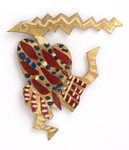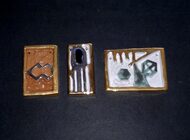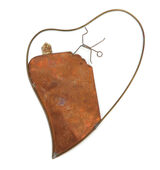
Only recently the goldsmith world has caught awareness of a necessity to ponder on sustainblity, the central theme of contemporary thought and future development.
So an homage to the jewels created by Riccardo Dalisi who was the first to retain the jewel a symbol of more responsibility toward environmental resources and of a territorial capital's valorization. Riccardo Dalisi is a leading figure in the international panorama of the Contemporary Art. He is a designer who coniugated the industrial-scale work with the hand-crafted work, winning the "Golden Compasses" in 1981. He was one of the first artists to assemble recycle and poor materials as tin, paper, copper, iron, sheet, ceramic, glass, wood and fabric transforming them in works of art with patience and craft abilities.


 Download the Biografial Sketch of Riccardo Dalisi
Download the Biografial Sketch of Riccardo Dalisi